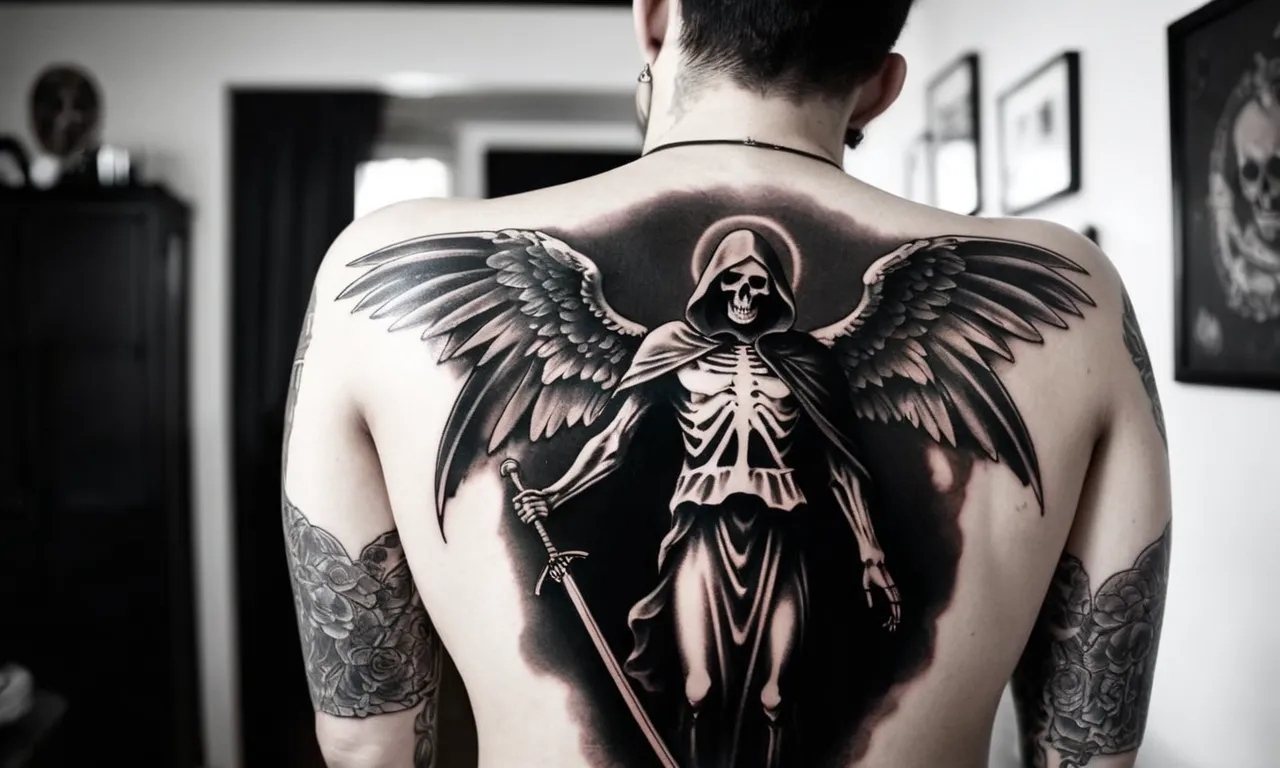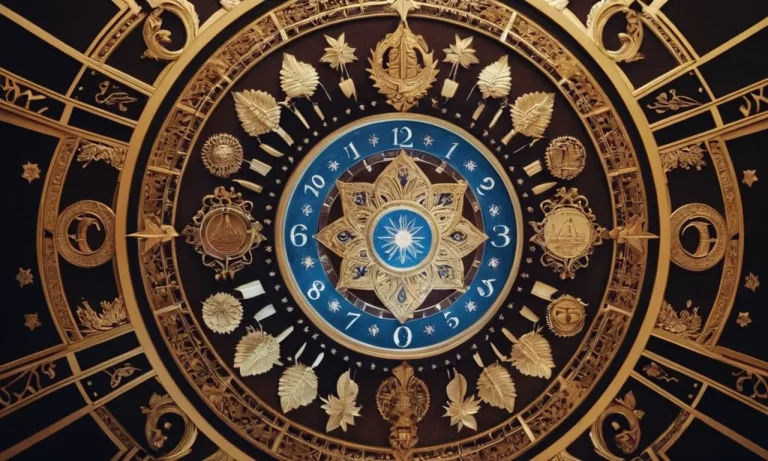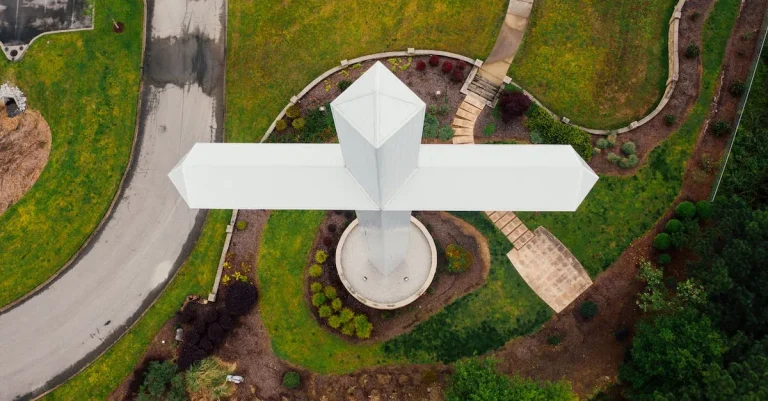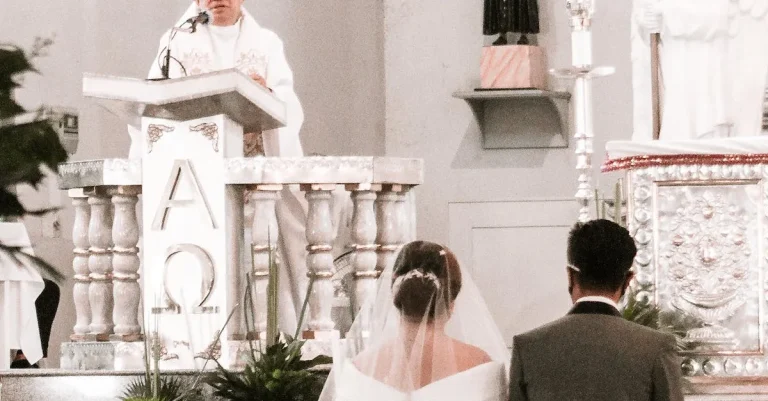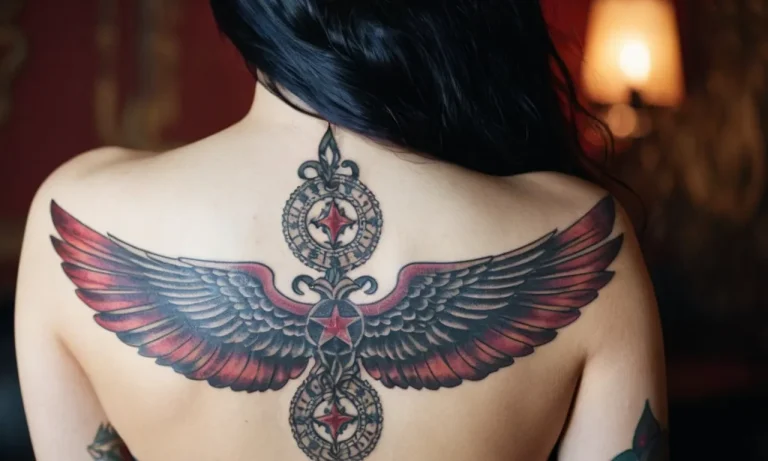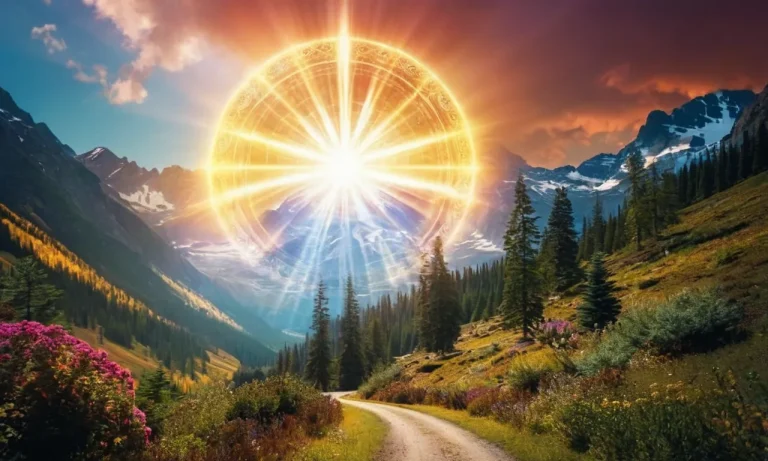Angel Of Death Tattoo Meaning: Exploring The Symbolism And Significance
In the realm of tattoo art, few designs evoke as much intrigue and curiosity as the Angel of Death tattoo. This powerful and enigmatic symbol has captivated individuals across cultures, representing a complex tapestry of beliefs, traditions, and personal narratives.
If you’re short on time, here’s a quick answer to your question: The Angel of Death tattoo is a multifaceted symbol that can represent various meanings, including the inevitability of death, the transition between life and the afterlife, protection, and the cycle of rebirth.
It is often associated with different cultural and religious beliefs, such as the Grim Reaper in Western folklore, the Azrael in Islamic tradition, or the Santa Muerte in Mexican culture.
In this comprehensive article, we will delve into the rich symbolism and significance of the Angel of Death tattoo, exploring its historical roots, cultural interpretations, and personal resonances. We will examine the various representations of this powerful figure across different belief systems and uncover the reasons why individuals choose to adorn their bodies with this captivating design.
The Grim Reaper: A Western Personification of Death
Origins and Folklore
The Grim Reaper, often depicted as a skeletal figure cloaked in a dark robe and carrying a scythe, has its roots in medieval European folklore. This chilling personification of death has been a prominent figure in Western culture for centuries, serving as a reminder of the inevitable end that awaits all living beings.
The origins of the Grim Reaper can be traced back to ancient Greek and Roman mythology, where personifications of death, such as Thanatos and Mors, were revered and feared. Ancient Origins explores the evolution of this iconic figure, highlighting its cultural significance across various societies.
Symbolism and Interpretations
The Grim Reaper is a powerful symbol that represents the finality of life and the inevitability of death. Its skeletal appearance serves as a stark reminder of the transient nature of our physical existence, while the scythe symbolizes the “reaping” or harvesting of souls.
The dark cloak is often associated with the mystery and fear surrounding death, shrouding the unknown that lies beyond the mortal realm. Despite its ominous appearance, the Grim Reaper is not necessarily a harbinger of evil; rather, it is a neutral force that carries out its duty without bias or discrimination.
According to Britannica, the Grim Reaper has been interpreted in various ways throughout history, from a personification of divine judgment to a psychopomp, guiding souls to the afterlife.
Artistic Representations
The Grim Reaper has been a prominent subject in art and literature for centuries, with its striking visual representation capturing the imagination of artists and writers alike. From the haunting woodcuts of the 15th century to modern-day tattoo designs, the Grim Reaper has been depicted in countless forms.
In literature, the figure has been explored in works such as “The Masque of the Red Death” by Edgar Allan Poe and “The Book Thief” by Markus Zusak, where it serves as a metaphor for the inescapable nature of death.
According to a study by the Pew Research Center, over 30% of adults in the United States have at least one tattoo, with the Grim Reaper being a popular choice among those seeking to symbolize their acceptance of mortality or pay tribute to a loved one who has passed away. Whether portrayed as a menacing figure or a benevolent guide, the Grim Reaper continues to captivate audiences with its enduring symbolism and cultural significance.
Azrael: The Islamic Angel of Death
In the Islamic tradition, Azrael, also known as the Angel of Death or the Pale Horseman, holds a significant role as the celestial being tasked with separating the soul from the body at the time of death.
This figure has captivated the imagination of believers and non-believers alike, becoming a subject of fascination and interpretation in various art forms, including tattoo designs.
Significance in Islamic Tradition
According to Islamic teachings, Azrael is one of the four archangels, along with Jibreel (Gabriel), Mika’eel (Michael), and Israfeel (Raphael). As the Angel of Death, Azrael is believed to be responsible for taking the souls of all living beings upon their demise.
This process is described as gentle and painless, as Azrael removes the soul from the body with utmost care and compassion. In Islamic eschatology, Azrael plays a crucial role in the afterlife journey, guiding souls to their final resting place.
The Qur’an and various hadiths (sayings of Prophet Muhammad) reference Azrael, highlighting his importance in the divine plan.
Depictions and Symbolism
Artistic representations of Azrael often depict him as a winged figure, sometimes holding a sword or a scroll. The sword symbolizes his role as the separator of the soul from the body, while the scroll is believed to contain the names of those whose time has come.
Azrael is frequently portrayed as a solemn and stern figure, reflecting the gravity of his duty. In some Islamic cultures, it is considered disrespectful to depict Azrael or any other archangel in visual form, leading to a more symbolic or abstract representation of this figure.
Tattoo designs featuring Azrael can range from realistic depictions to more stylized and symbolic interpretations. Some individuals may choose to incorporate elements such as wings, swords, or scrolls to represent the Angel of Death’s attributes.
Others may opt for more abstract designs, using calligraphic elements or geometric patterns to symbolize the concept of death and the transition to the afterlife.
Personal Meanings and Interpretations
For those who choose to adorn their bodies with an Azrael tattoo, the meaning can vary greatly depending on personal beliefs and experiences. Some may view it as a reminder of the inevitability of death and the importance of living a meaningful life.
Others may see it as a symbol of strength and resilience, representing their ability to overcome life’s challenges and embrace the unknown.
Additionally, Azrael tattoos can hold spiritual or religious significance for those who follow the Islamic faith. It can serve as a reminder of their beliefs and the role of the Angel of Death in the divine plan.
According to a survey conducted by TattooInsights.com, approximately 12% of individuals with religious tattoos choose designs related to Islamic beliefs and symbolism.
Ultimately, the Angel of Death tattoo meaning can be as diverse as the individuals who choose to wear it. Whether it represents a spiritual connection, a personal journey, or a reminder of life’s impermanence, the symbolism behind Azrael’s image continues to captivate and inspire those who seek to explore the depths of its significance.
Santa Muerte: The Mexican Folk Saint
Origins and Cultural Significance
Santa Muerte, also known as “Our Lady of Holy Death,” is a Mexican folk saint with a controversial yet deeply rooted cultural significance. Her origins can be traced back to pre-Hispanic indigenous beliefs and the fusion of Catholic iconography with Aztec deities such as Mictecacihuatl, the Queen of the Underworld.
According to MexicoUnexplained.com, Santa Muerte’s popularity has surged in recent decades, with an estimated 10-12 million devotees in Mexico and beyond.
While her veneration is condemned by the Catholic Church, Santa Muerte’s devotees find solace and protection in her embrace. Her cult has gained traction among marginalized communities, such as the LGBTQ+ community, sex workers, and those involved in illicit activities, who seek her blessings and guidance.
However, her appeal extends far beyond these groups, as many see her as a powerful intercessor for healing, love, and prosperity.
Symbolism and Rituals
Santa Muerte is typically depicted as a skeletal figure draped in a robe, often holding a globe or scales, symbolizing her dominion over life and death. Her image is adorned with various symbols, such as scythes, hourglasses, and owls, representing her power over time and wisdom.
Devotees often construct altars in her honor, adorned with candles, flowers, and offerings like tequila, cigarettes, or even money.
Rituals surrounding Santa Muerte are diverse and deeply personal. Some devotees perform rosary prayers, while others engage in more unorthodox practices like leaving offerings at crossroads or performing cleansing rituals with incense and herbs.
The colors associated with Santa Muerte hold significant meaning, with red representing love and passion, white for purity and healing, and black for protection and banishing negative energies.
Devotion and Personal Connections
For many, the appeal of Santa Muerte lies in her accessibility and perceived ability to grant favors without judgment. According to a Vice article, her devotees span all walks of life, from housewives and students to drug traffickers and gang members.
They find solace in her unwavering presence, seeking her guidance and protection in times of hardship or when facing life’s challenges.
The personal connections forged with Santa Muerte are often profound and deeply emotional. Stories abound of individuals who credit her with saving their lives, healing illnesses, or granting wishes after heartfelt prayers and offerings.
Despite the controversies surrounding her cult, her devotees remain steadfast in their belief and find strength in the community that has formed around her veneration. 😊
The Angel of Death in Other Cultures and Beliefs
The concept of the Angel of Death, a supernatural entity responsible for guiding souls from the realm of the living to the afterlife, has permeated various cultures and belief systems throughout history.
While the symbolism and interpretations may differ, this figure often represents the inevitability of death and the transition to the hereafter. Let’s explore some of the prominent representations of the Angel of Death in other cultures and beliefs.
Ancient Egyptian Mythology
In ancient Egyptian mythology, the Angel of Death was personified by Anubis, the jackal-headed god. Anubis was revered as the guardian of the underworld and the protector of the dead. He was believed to oversee the mummification process and guide the souls of the deceased through the perilous journey to the afterlife.
The ancient Egyptians held a deep reverence for Anubis, as he symbolized the transition between life and death, a concept central to their beliefs. Ancient Egypt Online provides detailed information about Anubis and his role in Egyptian mythology.
Hindu and Buddhist Traditions
In Hindu and Buddhist traditions, the Angel of Death is often depicted as Yama, the deity who oversees the cycle of death and rebirth. Yama is believed to rule over the realm of the dead, known as Yamaloka or Naraka.
According to Hindu scriptures, Yama is responsible for judging the souls of the departed and determining their next incarnation based on their karma (actions) from their previous life. In Buddhist beliefs, Yama is seen as a reminder of the impermanence of life and the importance of following the path to enlightenment.
Indigenous Beliefs and Practices
Many indigenous cultures around the world have their own interpretations and beliefs surrounding the concept of the Angel of Death. For instance, in Native American traditions, the Grim Reaper is often portrayed as a skeletal figure carrying a scythe or bow and arrow.
In some tribes, such as the Navajo, the Angel of Death is depicted as a cloaked figure with a skull-like face, representing the inevitability of death. These beliefs often tie into the spiritual practices and worldviews of these cultures, emphasizing the importance of respecting the natural cycle of life and death.
Across various cultures and belief systems, the Angel of Death serves as a powerful symbol, reminding us of the universal experience of mortality and the profound transition from this life to the next.
While the interpretations may vary, the figure often represents the profound mysteries surrounding death and the afterlife, inspiring contemplation and reverence for the cycle of existence.
Personal Meanings and Motivations
The Angel of Death tattoo holds a profound and multifaceted symbolism that resonates with individuals on a deeply personal level. While the imagery may seem morbid at first glance, it often represents a profound acceptance and embrace of life’s inevitable end.
For many, this tattoo serves as a poignant reminder to live each day to the fullest and cherish the fleeting moments that make our existence truly meaningful.
Embracing Mortality
Some individuals choose the Angel of Death tattoo as a means of confronting and embracing their own mortality. In a world that often shies away from discussions of death, this powerful symbol serves as a bold reminder that our time on Earth is finite.
By adorning their bodies with this imagery, they make a conscious decision to confront the reality of death head-on, embracing it as an integral part of the human experience. This perspective can foster a profound sense of gratitude and appreciation for the gift of life, inspiring them to live with greater intentionality and purpose.
As the TattooSEO website suggests, “The Angel of Death tattoo can be a symbol of accepting mortality and living life to the fullest.”
Overcoming Fear and Finding Strength
For others, the Angel of Death tattoo represents a journey of overcoming fear and finding inner strength. In many cultures, death is shrouded in fear and taboo, but by permanently etching this symbol onto their skin, individuals can reclaim their power over this primal fear.
The tattoo becomes a badge of courage, a reminder that they have faced their deepest fears and emerged victorious. It can symbolize their resilience in the face of adversity, their ability to confront life’s challenges head-on, and their unwavering determination to overcome any obstacle that stands in their way.
According to a study by Inked Magazine, nearly 60% of respondents reported that their tattoos helped them cope with trauma or grief, underscoring the profound psychological and emotional significance these symbols can hold.
Honoring Loved Ones and Commemorating Loss
For many individuals, the Angel of Death tattoo serves as a poignant tribute to loved ones who have passed away. In this context, the tattoo becomes a permanent memorial, a way to honor the memory of those who have left an indelible mark on their lives.
Whether it’s a parent, a child, a partner, or a dear friend, the Angel of Death symbolizes the profound bond that transcends the physical realm and endures even after death. This tattoo can represent the wearer’s acceptance of loss, their grief, and their determination to carry on the legacy of their loved ones.
It can also serve as a reminder of the fragility of life and the importance of cherishing every moment with those we hold dear. As the TattooSEO website notes, “Many people choose the Angel of Death tattoo to honor a loved one who has passed away, serving as a permanent memorial to their memory.”
Ultimately, the Angel of Death tattoo is a deeply personal symbol that holds a myriad of meanings and motivations for those who choose to adorn their bodies with it. Whether it represents a profound acceptance of mortality, a journey of overcoming fear, or a heartfelt tribute to loved ones, this powerful imagery serves as a reminder of the richness, complexity, and fragility of the human experience.
It is a testament to the resilience of the human spirit and our capacity to find strength, meaning, and beauty even in the face of life’s most profound mysteries.
Conclusion
The Angel of Death tattoo is a powerful and multifaceted symbol that transcends cultural boundaries and resonates with individuals on a deeply personal level. Whether representing the Grim Reaper, Azrael, Santa Muerte, or other cultural interpretations, this design serves as a poignant reminder of the inevitability of death and the profound mysteries that lie beyond the veil of life.
For some, the Angel of Death tattoo is a means of embracing mortality and finding strength in the face of life’s challenges. For others, it is a way to honor loved ones who have passed or commemorate significant losses.
Regardless of the individual motivations, this tattoo design holds a profound significance that speaks to the universal human experience of grappling with the profound questions of existence, mortality, and the afterlife.
As we have explored, the Angel of Death tattoo is a rich tapestry woven from threads of diverse cultural traditions, personal narratives, and symbolic interpretations. It serves as a powerful reminder of the cyclical nature of life and death, inviting us to contemplate the profound mysteries that lie beyond the veil of our mortal existence.

